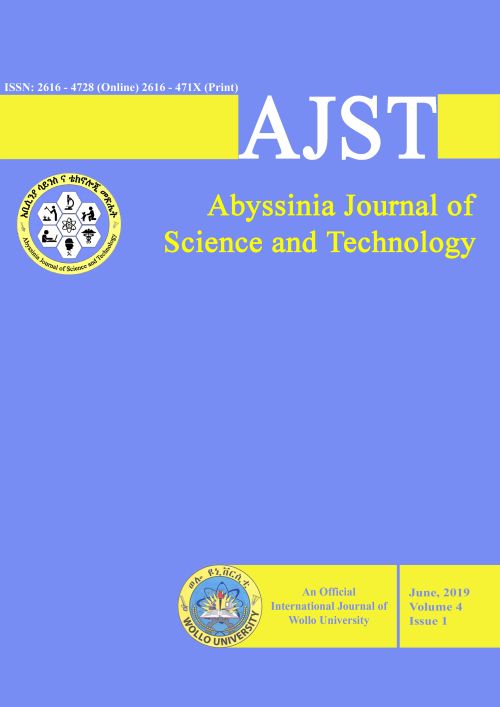Main Article Content
Effects of Eucalyptus camaldulensis tree plantation on indigenous trees and soil properties in North Western Ethiopia
Abstract
Widespread deforestation demanded proportional restoration initiative either through an active plantation of fast-growing tree species or passive restoration, which depend on natural regeneration of the land. This study aimed at characterizing the impacts of Eucalyptus plantation on woody plant species and selected soil physicochemical properties, the adjacent natural forest was considered as a reference. Data was collected by using plots established on transect lines inside the plantation and adjacent forests. Diversity indices were used for the analysis of vegetation data. Seventy-one woody plant species (33 Eucalyptus and 63 natural forests) were determined with a density of 404/ha in plantation and 635/ha in the natural forests. The basal area was 4.9 m2 /ha in plantation and 24.5 m2 /ha in natural. The regeneration status in the plantation was 699 seedlings and 344 saplings/ha while the natural forest had 1117 seedlings and 390 saplings/ha. Fourteen plant species were recovered from the soil seed bank, 12 in natural and 7 in plantation. Soil seed bank was not similar in the two forests with Sorenson’s similarity values of 0.208. There were 11,022 seeds/m2 in natural forest and 10,667 seeds/m2 in plantation forests in the soil seed bank. The soil carbon, nitrogen, and potassium were significantly higher in natural forests as compared to plantation. The Cation exchange capacity and soil available phosphorus were found to be statistically similar. The pH of plantation forest was significantly lower than the natural forest. Furthermore, fostering effect of Eucalyptus plantation on native woody species and increase the biodiversity in northwestern Ethiopia.







